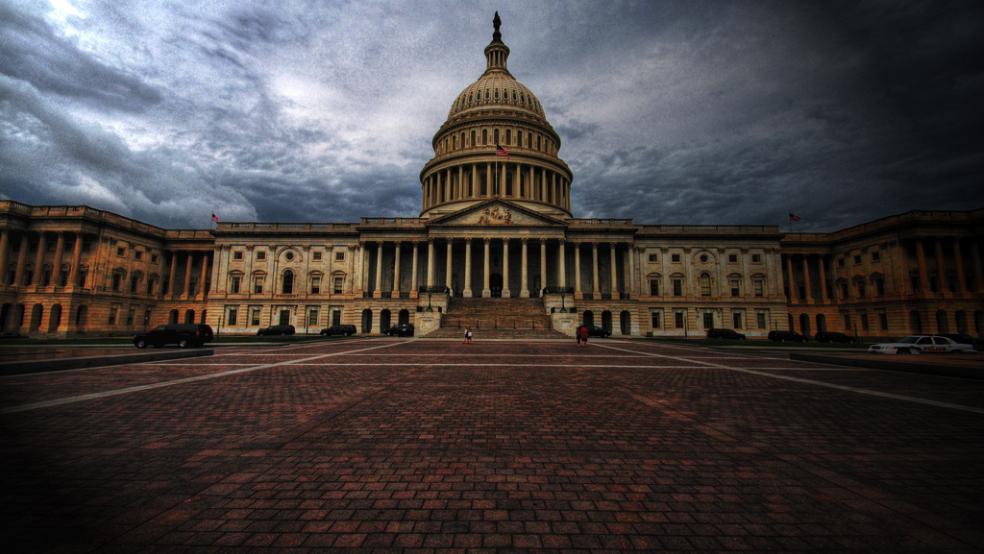The “Slatepitch,” named after the venerable online magazine Slate, describes their métier of commonly publishing counter-intuitive takes or defenses of unpopular subjects. Well, here’s my Slatepitch: The problem of America’s distaste for politicians can be solved with more politicians.
One of the biggest critiques of the political system is that it’s out of touch with the concerns of the voters. That may be a function in part of voter perspectives having nothing to do with the politicians who get elected. Because of our first-past-the-post system, millions of voters disagree intensely with whoever they have representing them in Congress. And we can actually do something about this.
Take the House of Representatives. (Please!) The ultimate breakdown of representation bears only a fleeting resemblance to the breakdown of the votes, according to data compiled by the Cook Political Report. In last month’s elections, Republicans picked up around 51.6 percent of the House vote nationwide, compared to 45.5 percent for Democrats and nearly 3 percent for other parties. But Republicans will seat around 57 percent of House legislators in the next Congress. In 2012 things were even worse: House Democrats won more votes than Republicans, but Republicans controlled the chamber.
Related: GOP Sees Popularity Surge Ahead of Senate Takeover
If you go state by state, the discrepancy becomes more pronounced. North Carolina Republicans secured 55.1 percent of House votes, but Republicans will hold 77 percent of the state’s 13 House seats. On the other side of the scale, California Democrats won 57 percent of House votes in the state, but Democrats will have 75.4 percent of the 53 House seats.
You can argue that gerrymandering caused this variance in North Carolina and many other states, but not California, which has an independent redistricting process. So the problem is not just redistricting, but the very nature of the districts themselves, and how we award legislative seats. The Senate is just a basket case on this front: My two Senators from California represent 69 times as many people as the two Senators from Wyoming, but they all get the same number of votes in the upper chamber.
The entire system violates the spirit of Baker v. Carr and the principle of one person, one vote. But if we look around the world or even in our own backyard, we can identify how to fix it.
First of all, our Congressional districts are far too small. The law setting the House of Representatives at 435 seats became effective in March 1913. At that time, we had a population of 97 million. Today we’re at 316 million, without any change in the number of legislators. District size has increased over three-fold, increasing the distance between members of Congress and their constituents. When lawmakers have hundreds of thousands of constituents, they can more easily escape scrutiny and get away with being less responsive to voters.
Related: Decision Time for GOP Contenders and Pretenders
You could make a modest reform here by making the size of Congressional districts equal to the population of the least populous state — call it the Wyoming rule. This alone would increase us to about 543 Representatives, and it would remedy some of the malapportionment problems we have. It would also bring us more in line with legislatures in countries like England, France, and Brazil, all of whom have more members in their respective lawmaking bodies, despite smaller populations than the U.S.
Alongside increasing the number of representatives, we should ensure that all voters have a voice in the aftermath of elections. You can do this through proportional representation. Simply put, if 45 percent of the public votes for House Democrats, they should get 45 percent of the seats. Given the increasing nationalization of our elections, it seems like a far preferable solution than the distortions we have now.
There are multiple ways to accomplish this. Party-list systems give people a vote for the party in the legislature rather than a particular candidate. If you want to retain the unique character of members of Congress running in districts, mixed-member systems give voters two votes: one for an individual candidate, and one for a party preference. Combining the two achieves proportional representation.
Or you could use a multi-member district, where the percentage of the vote gets reflected in the percentage of each party that voters send to the legislature. This should sound familiar to some readers because 10 U.S. states — Arizona, Idaho, Maryland, New Hampshire, New Jersey, North Dakota, South Dakota, Vermont, Washington, and West Virginia — use some form of a multi-member district.
Related: The 10 Richest Members of Congress in 2014
I could go on. The Senate as an institution is basically an anachronism that would be better made irrelevant like the House of Lords. The Electoral College, the means by which we choose the president, is even more outdated, based on a time when citizens were not expected to choose their chief executive. We could simply use the national popular vote to choose the winner; 11 states representing 61 percent of the 270 electoral votes needed for victory agree with this idea. And there’s a colorable argument that a presidential system with multiple veto points that consign the country to political gridlock makes less sense than a parliamentary democracy where the party in power has a free hand to set policy, and voters know precisely who to hold accountable for the results.
Whatever steps taken, the electoral process can result in a more engaged legislative body that actually reflects the perspectives of the country. Reforms could bolster candidates outside the two-party system, who right now are reduced to little more than spoilers. The changes could change how politicians seek votes and how they make decisions on policy with their constituents in mind.
But most important, they would allow everyone in the country to feel that at least some of their viewpoints can float up into the seats of power. Between the potential for voter suppression and the extreme power of money in politics, we have a lot of challenges to face along these lines. But perhaps the biggest is that the very structures of our elections frustrate true accountability and responsiveness. And we can change that quite easily.
In America, we tend to hold a near-mythic reverence for our Constitutional system, which came out of a myriad of compromises and biases. Call it the tyranny of tradition. In actuality, whenever America manages to install a government in another country, we never use our system. Afghanistan has multi-member parliamentary districts. Iraq has party-list proportional representation for Parliament and a figurehead president.
With some more clear-minded thinking and less reliance on the past, we can go a long way to solving one of the biggest problems in our politics: that nobody believes their participation matters.
Top Reads from The Fiscal Times:



